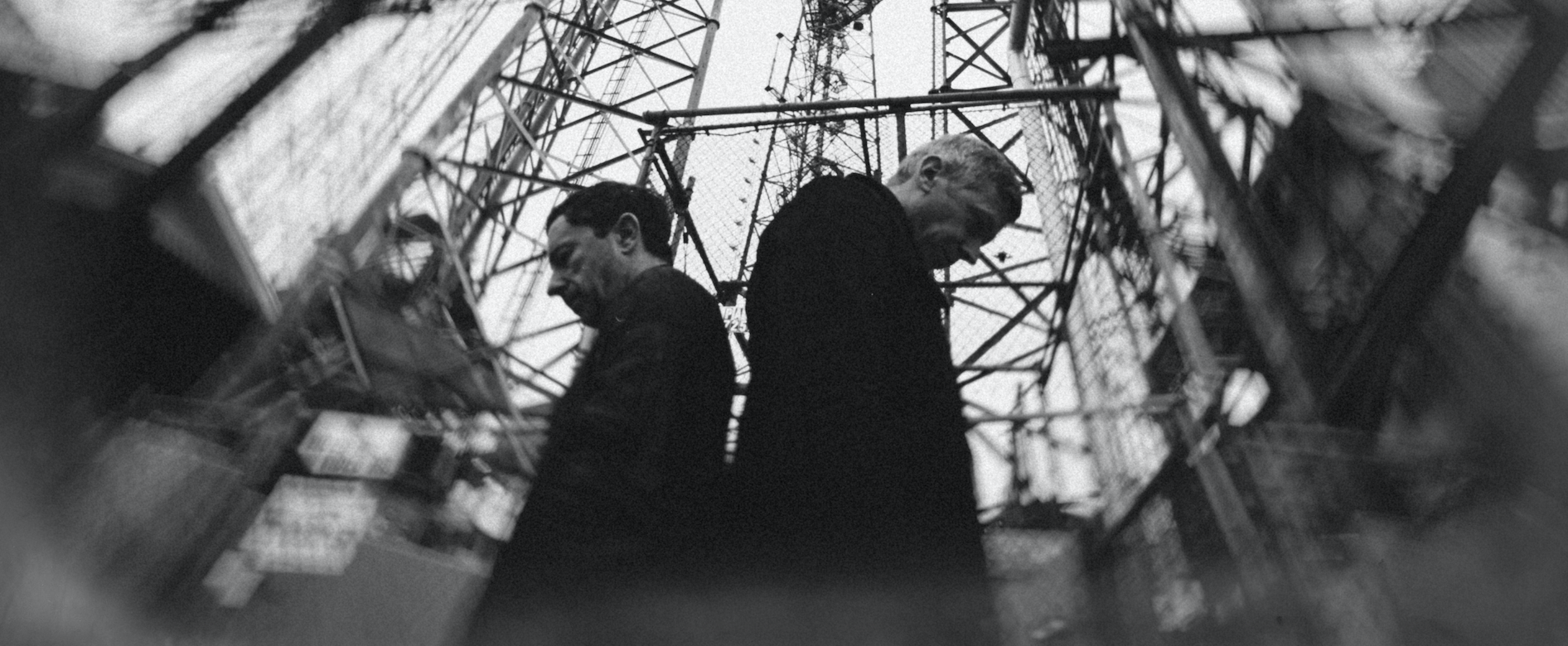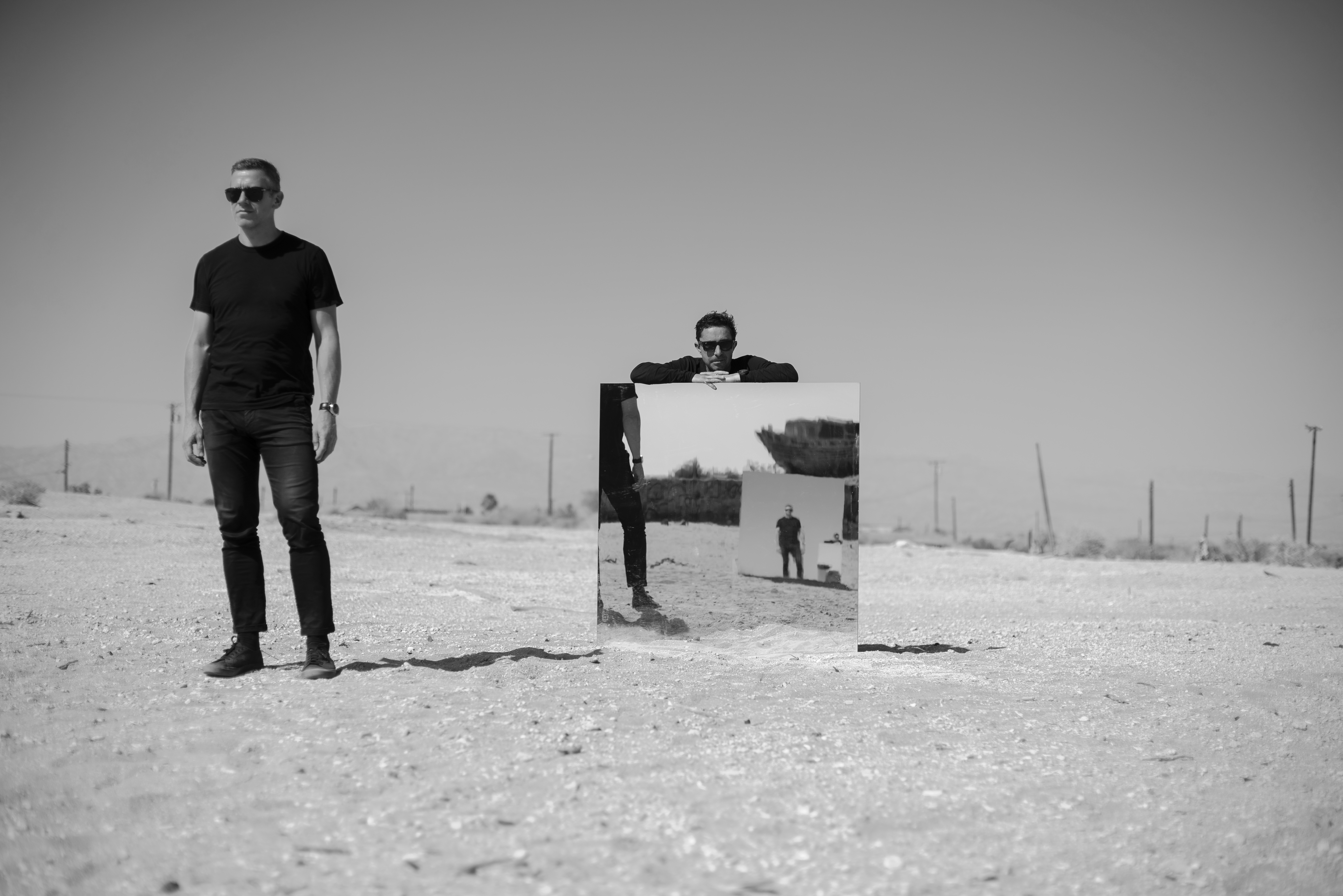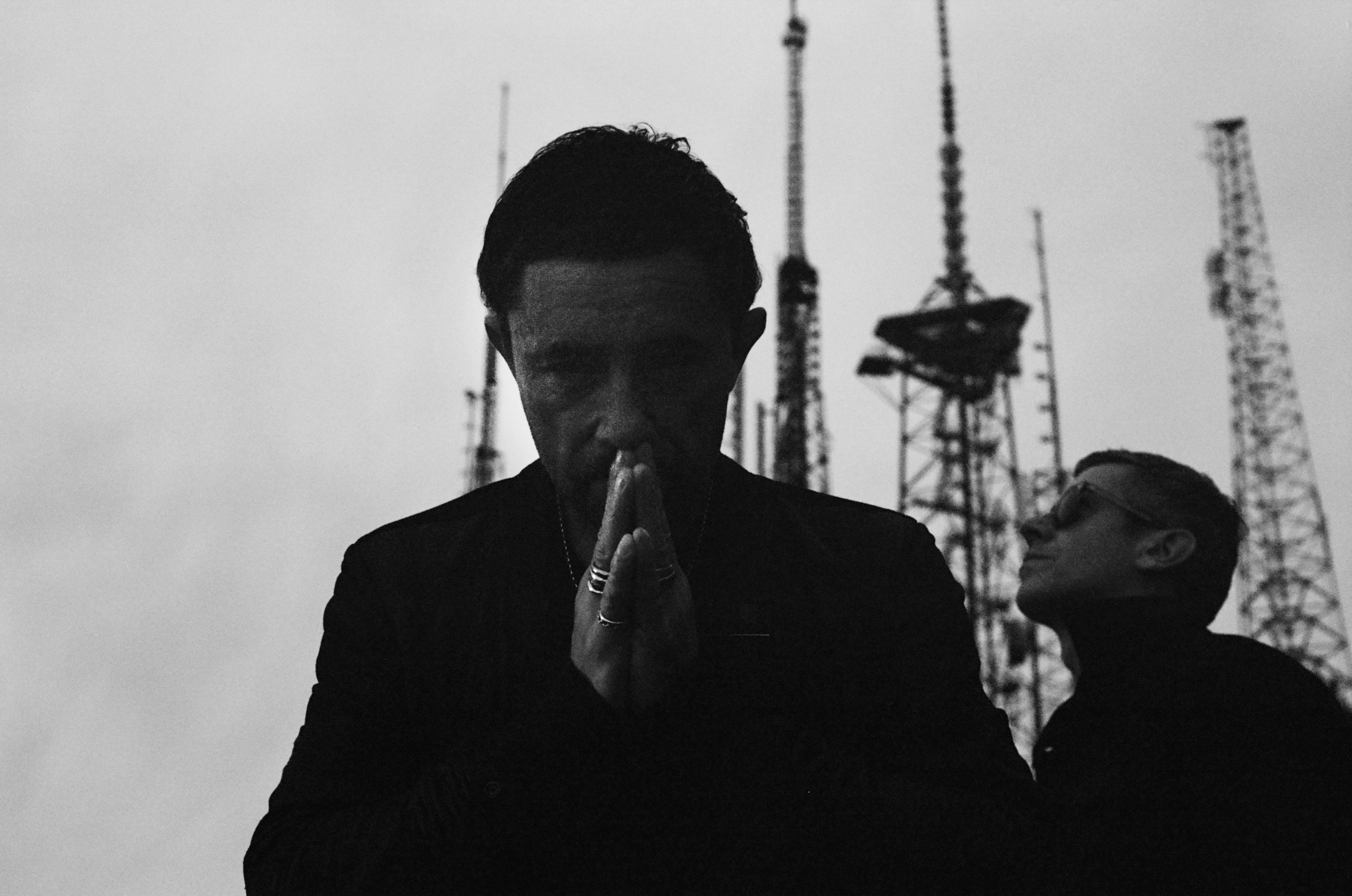The Cinematic Orchestra: A Collaborative Reset
Jason Swinscoe and Dominic Smith dig deep into their latest studio album.

The Cinematic Orchestra: A Collaborative Reset
Jason Swinscoe and Dominic Smith dig deep into their latest studio album.
The Cinematic Orchestra’s last studio album came back in 2007. In the 12 years since then, Jason Swinscoe, the project’s 1999 founder, has been touring extensively, performing at London’s Royal Albert Hall, Philharmonie de Paris, Coachella, and Glastonbury, among others. He’s enjoyed stints in New York, where he spent five years and worked on heaps of new music—none of which is yet to see the light of the day, barring a score for Disney’s feature-length nature documentary The Crimson Wing—and Los Angeles, which sparked this latest full-length in 2013.
Feeling frustrated with his musical progressions on the east coast, Swinscoe jumped on a plane to visit Dominic Smith, a close friend and long-term collaborator whom he met at Ninja Tune in the ‘90s, and the duo began writing music together. Smith’s fingerprints are all over The Cinematic Orchestra’s catalog—he’s been involved at different stages to different degrees—but this is the first time he’s come in and written music with Swinscoe from scratch. There was no plan other than to write an album with a political message, testament to their roots in the ‘90s London club scene, and to innovate within the same electronic nu-jazz aesthetics of their earlier work.
Having started on the album that year, and with Swinscoe in London and Smith in Los Angeles, the duo arranged collaborative sessions, writing large parts of the record in hotel suites with a stripped-back mobile setup. Often these sessions were shared with one of the various artists who feature on the record, among them Moses Sumney, Roots Manuva, and Dorian Concept. As the music began to flow a concept developed: it became a meditation on belief—an attempt to examine the shaky foundations that underpin it, while also emphasising its importance to our lives. “The prerequisite of everything in life is belief, both good and bad,” Smith says. “So what should we believe in—or what can we believe in and also importantly why do we believe in something?” To learn more about the story and processes behind it, XLR8R dialled in Swinscoe and Smith one afternoon in London, in between rehearsals for their upcoming live tour.
How are you feeling about To Believe?
J: We’re confident about the record. We feel it’s relevant on many levels, being released now. The time out was a reset for us, a chance to rethink where we’re at. Every record we’ve done has been a challenge that requires a lot of craft and exploration; it’s a considered process and this album is no different. It sees us work with lots of different artists and if you’re going to do that then you have to build that relationship, so everyone is clear about the themes. In the process of writing it, we wrote a lot of music and there will be a subsequent release after, so there won’t be a long hiatus again.
I understand that it has a political backdrop, and explores the timeless question of what to believe. To what extent is this connected to Brexit and Trump?
D: Well, we thought of the name before Brexit and Trump but these two world events are manifestations of deep-rooted problems in society that have been going on for some time. I think these sorts of things influenced our desire to reach out into a conversation with the music, but this is also connected to our early beginnings. We both grew up in a time when music was more widely politicised and it was inevitable that the music had a critical value to it, whatever it was. We came from a London club scene that was imbued with that feeling and as the genre became more international—as the US took hold of electronic music and turned it into this commercial juggernaut—it’s hard to see how you can still have this sort of feeling. We’re conscious of the privilege of listening to music with this feeling and we wanted to imbue this record with some of what we felt growing up. As our work with the record continued, once we had developed this idea we wanted to analyse the concept of belief. We wanted to explore how we structure our lives and how we make our decisions. As we went on, it’s impossible not to feel Brexit and Trump and all of these things, and so it feels relevant on many different levels.
“It looks like a long time from the outside but internally we’ve been non-stop working.”
When did work on the record begin?
J: I moved to Los Angeles in 2011 and we were there for two years, I think. At the time I was tinkering with live shows. We began our writing sessions just before I left back to Paris, in 2013. It felt really silly because I was just leaving. It took me some time to reset in Paris and then we began finding sessions to work together, to meet up and work on the record. A lot of our lives became consumed by everyday life but when we did write together it was intense. It looks like a long time from the outside but internally we’ve been non-stop working.
D: We only worked on the album when we were together and this contributed to the pace of the record. We valued being in the same room even though there are many ways of producing music remotely. I feel this is important to the feel of record.

This is the first time that you’ve actually worked on a record from scratch together, correct?
J: It is, but Dom has been instrumental in the project from the beginning, after we met at Ninja Tune. He actually sequenced In Motion, the first record. The involvement has been under the radar on the public side but he’s been instrumental all the way.
D: From the beginning, Jason and I have had a clear understanding of what was good and that led me to helping out with the first record. The relationship developed slowly from there and I became more involved with Ma Fleur. This is a different thing altogether. Previously Jason would work on his own or with other people, with various collaborations, and then I would be the first set of ears. We’d then work on arrangements and stuff like that but this time around it was a new thing for both of us as we were starting from nothing.
How did Dominic come to be involved at such an early stage this time?
J: I was living in New York for five years. My entry was actually the mixing of Ma Fleur, which I did in Manhattan, and not long after that we toured and then I was involved in the score of The Crimson Wing: Mystery of the Flamingos. This relocated me to London and so I was back and forth to New York, and after this I started taking the band into the studio, writing with Grey Reverend, whom I met in a coffee shop. He was playing his music on the cafe soundsystem and it pricked my ears. I asked who it was and he told me that they were his original songs. We became friends and subsequently he did a cover version of “To Build a Home.” He enjoyed deconstructing popular songs, from Bob Dylan to Radiohead. We built this rapport and then he joined the band. We toyed with the idea of writing another Cinematic record but in the end this was never released. It became the lost album, shelved because its concept and direction felt like too much of a tangent for then. The five years in New York were very productive but I was misled by the culture of the city, the commercialism and the hustle, and the record felt like it was driven by one’s ego and career. The collaborative thing had become less of a priority.
Then it turned out that Dom had relocated to Los Angeles, and there was less of a spotlight on this scene at the time. It was more of a creative environment. There was less competitiveness. That led me to Los Angeles. The New York record was put to one side and so we tried to have a reset, to go back to inspirations and back to the home studio.

So the record stemmed out of a conscious reset.
J: Exactly. The Crimson Wing had inflated everything because we had access to a 70-piece orchestra and working with this team in the film world meant that we we lost the essence of The Cinematic Orchestra. Los Angeles was the birth of Dom and I actually writing together with a blank canvas from scratch.
It’s not actually the first time we’ve done this. Everyday was a kind of embracing of club culture in the UK and I think it feels like it had lost its way. And so Ma Fleur and “To Build a Home” was like a reset with a specific purpose of writing a song. There are no boundaries with what we present with this project; it’s a free-rolling moving thing and so Ma Fleur was a conscious statement that confused people but has subsequently grown in popularity.
With this album, we never wanted to repeat or regurgitate that. So To Believe is just another reset. It’s a reflection of where we are now. A lot has happened in the 12 years since our last studio album, specifically in terms of technology, and we had all of these toys but we wanted to strip it back down and start writing from scratch. We wanted to record our own samples by taking artists into the studio and exploring textures and rhythms, continually constructing and deconstructing. Dom and I began discovering our own musical language which was to feed off each other and then we built in all of the amazing technology. We were clear that we didn’t want to follow trends or use existing presets.
And how did you find working in collaboration?
J: Collaboration is not easy, but it becomes easier when you’re working with someone who is understanding of the aesthetic you’re trying to push. It does question the ego, I think. It’s actually good to kind of see where each person’s skill set is, and also to lean on each other. With this album, it was made more difficult because I was in London and Dominic was in Los Angeles so we couldn’t go to the studio together easily. We had to travel and have sessions in hotels and apartments, back and forth. All of it was done in these shared spaces. “A Caged Bird/Imitations Of Life” was done in the Ace Hotel in Shoreditch. It sounds crazy.
How do you make a cohesive album when the production is so broken?
D: That’s so important to us, and I think this is why it took so long. The Cinematic Orchestra is an album act and while there are certainly standout-tracks, we’ve consistently delivered long-form records.
J: We worked on this very consciously. We made a lot more tracks than are on the album. There was a writing stage, where we explored different ideas, and the amount of material was overwhelming. We were trying to grasp the concepts, working out whom we wanted to collaborate with, and we had to choose nine tracks that we mixed in New York. Then at the last minute we had to remove two of the tracks because the album format informed us what needed to be taken out.
D: Yes, we were resequencing the record in the last few days while it was actually being mixed. We were also editing tracks in the mix. That’s not abnormal to us because we both had a strong idea of what we wanted the record to sound like. Even after the mixing process, there has been more post production. It’s super subtle things, like shifting tempos in some sections.
You’ve pulled in a number of collaborators. How did you go about finding them?
D: Like with the rest of the album, there wasn’t one way of working. The only thing that we prioritised was speaking to each artist about lyrical ideas ahead of time. We spoke about the album’s concepts, but in some cases we wrote with someone and we shared the melody lines, and on the other occasions the artists were more autonomous. Interestingly, I don’t think at any point the artist sang on the track that you’re hearing. The tracks changed each time.
How long did these recording sessions last?
D: It varied but it was normally around two weeks.
“It feels to me like there are ghosts of our previous albums embedded in this. For me, it encompasses all of these records and presents them in a contemporary context.”
And how simple was the setup?
D: We just set up a remote studio using a Macbook, a MIDI keyboard, a universal audio soundcard, a Neumann microphone, and ProTools. I have drives with stacks of really bespoke VIs, which are the more creative, high-end tools. It was lots of good equipment but we only used what we needed. We appreciated the limitations of old equipment. They only allow certain things so you have to start getting creative.
J: When you have two seconds of audio on a sampler before you have to extend the memory, it makes you learn to be selective. You get excited, you record stuff, and the device tells you that you’re maxed out and then you have to engage with the selection. Am I going to really engage with it or is it superfluous? What happens is that you’re brutal with what you record; you find the gold quickly. Minimalism has always been something we’ve wanted to explore in music.
You mentioned earlier about how important it is to move forward as artists rather than sticking with a tested formula. How did you try to move forward artistically on this particular album?
D: On this record, as with all of the others, there is a distinct style. With this one, we wanted to do something again that’s unique compared to the others and we drew inspiration from the back catalog and, given how music and technology has evolved, melding digital and analog sounds more fundamentally. It feels to me like there are ghosts of our previous albums embedded in this. For me, it encompasses all of these records and presents them in a contemporary context.
Given your experiences in writing music for film, and the project title, is there a visual element to the writing process?
D: We both intend to write stuff that’s cinematic. The “Cinematic” in the band name is the soft cinematic. There’s a suggestion for people to take it and use their own imagination to create the image. It’s the incorporation is film music within the collage of influences. We both like creating music with a sense of visual even if it’s not there in front of you; it’s in your mind’s eye, the imaginary movie that you play along.
To Believe lands March 15 via Ninja Tune and Domino.

